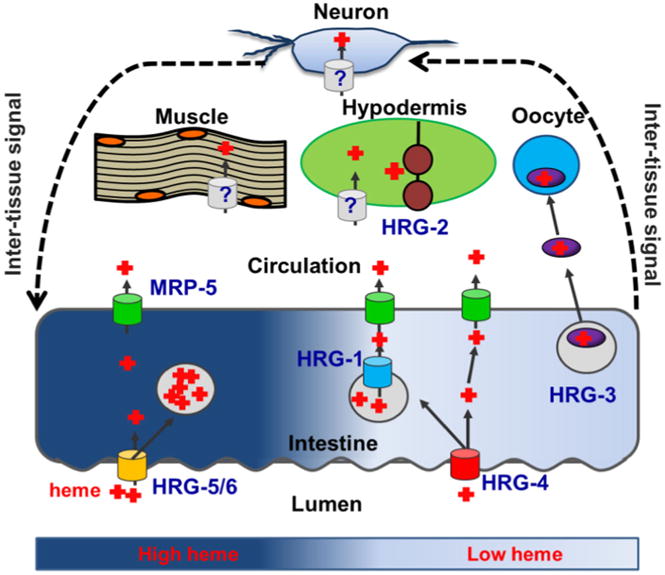Fig. 2.

Model of heme homeostasis in C. elegans. In order to adapt to varying environmental heme conditions, C. elegans has adopted several mechanisms to ensure that tissue heme requirements are fulfilled while preventing heme toxicity. In high environmental heme conditions, expression of high affinity heme transporters is repressed, and excess heme is compartmentalized into vesicles. When the worm encounters low environmental heme, high affinity heme importers HRG-4 and HRG-1 are expressed to increase intestinal heme uptake and release heme stored in vesicles, respectively. The heme exporter MRP-5 facilitates heme availability to extraintestinal tissues over a broad heme range. HRG-3 is secreted by the intestine during severe heme deficiency to ensure that oocytes and developing embryos acquire sufficient heme. HRG-2 is upregulated to increase heme utilization in the hypodermis. It is likely that homeostatic adaptation is controlled at the systemic level by bidirectional signaling between the intestine and extraintestinal tissues
